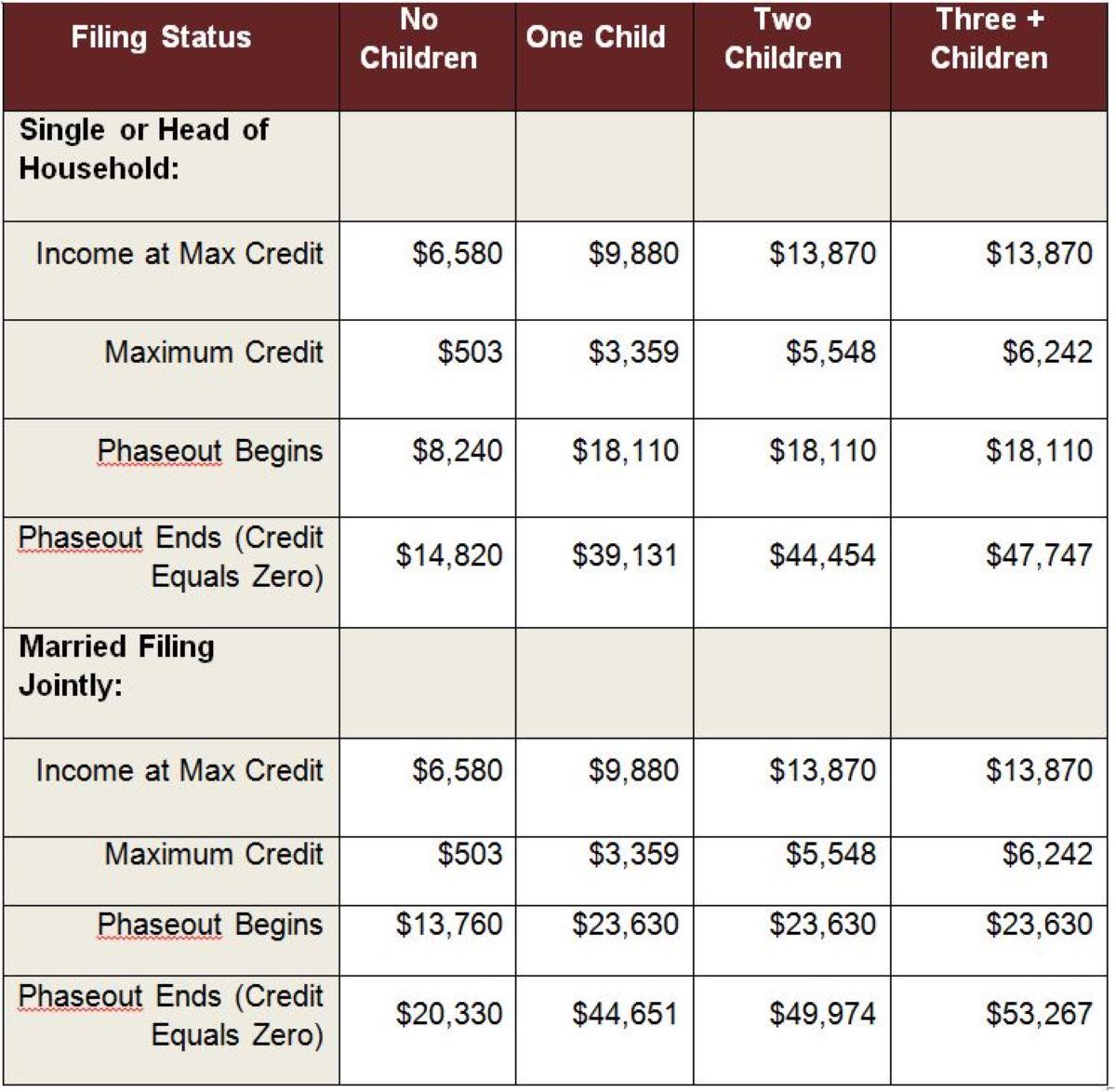Home>Finance>What Does Accounting Information Assist Users To Do?


Finance
What Does Accounting Information Assist Users To Do?
Modified: December 30, 2023
Discover how accounting information empowers users in the field of finance. Gain financial insights and make informed decisions with accurate financial data.
(Many of the links in this article redirect to a specific reviewed product. Your purchase of these products through affiliate links helps to generate commission for LiveWell, at no extra cost. Learn more)
Table of Contents
Introduction
Accounting information plays a crucial role in helping users make informed decisions about their financial activities. Whether it’s individuals, businesses, or government entities, accounting information provides valuable insights into the financial health and performance of an organization. By analyzing this information, users can gauge profitability, assess risks, allocate resources, and comply with regulatory requirements.
Accounting information refers to the collection, interpretation, and communication of financial data. It involves the measurement and recording of financial transactions, summarizing them into financial statements, and presenting them in a meaningful way. Users of accounting information include shareholders, lenders, management, employees, regulators, and other stakeholders who rely on the data to make informed decisions.
In this article, we will explore how accounting information assists users in various aspects of their decision-making process. From financial planning and analysis to performance evaluation and risk assessment, let’s delve into the central role that accounting information plays in modern finance.
By understanding the significance of accounting information, users can harness its power to better navigate the complex world of finance. Through accurate and reliable financial data, individuals and organizations can make informed decisions that align with their goals and objectives. So, let’s dive deeper into the ways accounting information assists users and enhances their decision-making capabilities.
Understanding Accounting Information
Before we delve into how accounting information assists users, it’s crucial to understand what accounting information encompasses. Accounting information comprises various financial records and reports that provide insight into the financial health and stability of an organization. It includes financial statements such as income statements, balance sheets, cash flow statements, and statement of shareholders’ equity.
These financial statements are prepared following generally accepted accounting principles (GAAP) or international financial reporting standards (IFRS) to ensure consistency and comparability. They provide a snapshot of an organization’s financial performance, liquidity, solvency, and overall value.
Accounting information is typically organized into two categories: financial accounting and managerial accounting. Financial accounting focuses on providing information to external users such as investors, creditors, and regulators. It follows strict reporting standards and is primarily concerned with transparency, accuracy, and compliance.
On the other hand, managerial accounting focuses on providing information for internal users, particularly management. It involves cost analysis, budgeting, performance evaluation, and decision-making. Managerial accounting information enables managers to make informed decisions and efficiently allocate resources within an organization.
Regardless of the type of accounting information, its primary function is to provide stakeholders with reliable and relevant data for decision-making purposes.
Now that we have a basic understanding of accounting information, let’s explore how it assists users in their decision-making process.
Decision-Making Process
The decision-making process is a fundamental aspect of managing any organization, and accounting information plays a vital role in supporting this process. By providing relevant financial data, accounting information assists users in making well-informed decisions that can drive the success of an organization.
One of the key ways accounting information aids the decision-making process is by providing a clear understanding of an organization’s financial position. Users can analyze financial statements, such as the balance sheet, to assess the company’s assets, liabilities, and equity. This information is crucial for determining the organization’s financial stability and its ability to cover its financial obligations.
Furthermore, accounting information helps users evaluate the profitability of an organization. By examining the income statement, users can assess the company’s revenue, expenses, and net income. This data enables them to make informed decisions regarding pricing strategies, cost control measures, and investment opportunities.
Accounting information also supports users in assessing the liquidity and cash flow of an organization. Users can analyze the cash flow statement to understand the organization’s ability to generate cash, meet its short-term obligations, and fund its operations. This information is critical for making decisions about cash management, budgeting, and investment decisions.
Moreover, accounting information facilitates users in evaluating the financial performance of an organization. Through various financial ratios and analysis techniques, users can compare the organization’s financial performance to industry benchmarks and competitors. This information guides decision-making related to growth strategies, investment opportunities, and performance improvement initiatives.
Additionally, accounting information aids users in making decisions about financing and investment. It provides crucial data for assessing the financial feasibility of investment projects, evaluating potential risks, and determining the optimal funding mix. This information enables users to make well-informed decisions about raising capital, acquiring assets, and managing debt.
Overall, accounting information provides valuable insights and data to users throughout the decision-making process. By analyzing financial statements, assessing profitability and liquidity, and evaluating financial performance, users can make informed decisions that align with the organization’s goals and objectives.
Financial Planning and Analysis
Financial planning and analysis are essential components of managing and growing an organization. Accounting information plays a critical role in supporting these processes by providing valuable insights and data for effective financial planning and analysis.
Financial planning involves setting goals, creating budgets, and developing strategies to achieve financial objectives. Accounting information serves as the foundation for financial planning by providing historical financial data, identifying trends and patterns, and projecting future financial outcomes.
By analyzing accounting information, users can determine the financial resources needed to support business operations, identify potential risks and opportunities, and establish realistic financial goals.
Furthermore, accounting information enables users to develop accurate and comprehensive financial budgets. It provides insights into revenue streams, cost structures, and cash flows, which are essential for determining expected income and expenses. These budgets serve as a roadmap for financial decision-making and help organizations allocate resources effectively and efficiently.
In addition to financial planning, accounting information supports financial analysis. Users can conduct financial analysis to assess the performance, profitability, and financial viability of an organization. By examining key financial ratios, comparing financial statements over time, and benchmarking against industry standards, users can gain a deeper understanding of an organization’s financial health.
Financial analysis also involves conducting trend analysis, variance analysis, and ratio analysis to identify areas of improvement or concern. This information assists users in making informed decisions regarding cost control, revenue generation, and investment opportunities.
Moreover, accounting information aids in forecasting and scenario analysis. By utilizing historical financial data and market trends, users can project future cash flows, revenue growth, and financial performance. These forecasts and scenario analyses enable organizations to make strategic decisions, plan for contingencies, and assess the potential impact of various scenarios on their financial position.
Overall, accounting information is instrumental in financial planning and analysis. It provides the necessary data and insights to develop realistic financial plans, budgets, and strategies. By leveraging accounting information, users can make informed decisions that drive financial stability, growth, and success for their organizations.
Performance Evaluation
Performance evaluation is a critical aspect of assessing the effectiveness and efficiency of an organization’s operations. Accounting information plays a fundamental role in evaluating performance by providing relevant data to measure and compare actual results against predetermined goals and benchmarks.
One of the key ways accounting information assists in performance evaluation is through the use of financial ratios. Financial ratios are calculated using data from financial statements, such as the income statement and balance sheet. These ratios provide insights into the financial health, profitability, liquidity, and efficiency of an organization.
Users can analyze financial ratios to assess various aspects of performance, such as profitability ratios (e.g., return on investment, gross profit margin), liquidity ratios (e.g., current ratio, quick ratio), and efficiency ratios (e.g., inventory turnover, accounts receivable turnover).
Furthermore, accounting information enables users to conduct variance analysis, which compares actual financial performance against budgeted or expected performance. By analyzing deviations from the budget, users can identify areas of strength or weakness and make necessary adjustments to improve performance.
In addition to financial ratios and variance analysis, accounting information supports performance evaluation through the analysis of key performance indicators (KPIs). KPIs are specific metrics that measure the performance of different aspects of an organization, such as sales growth, customer satisfaction, employee productivity, or quality control.
By tracking and analyzing KPIs, users can evaluate the effectiveness of strategies, initiatives, and operational performance. This information allows organizations to identify areas for improvement, optimize processes, and enhance overall performance.
Accounting information also assists in performance evaluation by providing data for benchmarking. Benchmarking involves comparing an organization’s performance against industry standards, competitors, or best practices. By benchmarking, users can identify areas where the organization is underperforming and implement measures to improve performance.
Moreover, accounting information aids users in evaluating the performance of individual departments or business units within an organization. By preparing segmented financial statements and conducting cost allocation analysis, users can assess the financial performance and contribution of each department to the overall organization.
Overall, accounting information serves as a valuable tool for performance evaluation. By analyzing financial ratios, conducting variance analysis, tracking KPIs, and benchmarking against industry standards, users can assess the effectiveness and efficiency of an organization’s operations and make informed decisions to drive improved performance.
Resource Allocation
Resource allocation refers to the process of assigning and distributing resources within an organization in the most efficient and effective manner. Accounting information plays a crucial role in resource allocation by providing valuable insights into the availability, utilization, and cost of various resources.
One of the key ways accounting information assists in resource allocation is through cost analysis. By analyzing costs associated with different activities, functions, or projects, users can determine the most cost-effective ways to allocate resources. Accounting information provides data on direct costs, indirect costs, fixed costs, variable costs, and overhead expenses, allowing users to make informed decisions about resource allocation.
Furthermore, accounting information enables users to conduct cost-benefit analysis. By comparing the costs associated with a particular resource or project to the expected benefits or returns, users can make decisions regarding the allocation of resources. This analysis helps organizations prioritize resource allocation based on the potential value and impact on overall performance and profitability.
Accounting information also supports resource allocation through budgeting. By preparing budgets based on projected revenue and expenses, organizations can allocate resources in line with their financial goals and objectives. Budgeting ensures that resources are allocated and utilized efficiently, preventing unnecessary overspending or underutilization of resources.
Moreover, accounting information assists users in assessing the return on investment (ROI) for different projects or activities. By analyzing the financial impact of investing resources in particular ventures, users can make informed decisions about allocating resources to projects with the highest potential ROI. This helps organizations optimize resource allocation and maximize their overall financial performance.
In addition to cost analysis and budgeting, accounting information supports resource allocation through the analysis of financial performance. By evaluating the financial performance of different departments, business units, or projects, users can allocate resources based on profitability and growth potential. This data helps organizations identify areas of strength or weakness and strategically allocate resources to achieve their goals.
Overall, accounting information provides valuable insights into the cost, benefit, and financial impact of resource allocation decisions. By conducting cost analysis, cost-benefit analysis, budgeting, and evaluating financial performance, users can allocate resources effectively and efficiently, driving overall success and growth for their organizations.
Risk Assessment
Risk assessment is a crucial aspect of effectively managing an organization and making informed decisions. Accounting information plays a significant role in risk assessment by providing insights into potential risks, vulnerabilities, and the financial impact of uncertain events.
One of the key ways accounting information assists in risk assessment is through financial statement analysis. By analyzing financial statements, users can identify potential financial risks such as excessive debt, declining profitability, liquidity issues, or irregularities in financial reporting. This insight allows organizations to proactively address these risks and implement risk mitigation strategies.
Furthermore, accounting information enables users to assess the financial stability of an organization and its ability to withstand economic downturns or unexpected events. By examining factors such as cash flow, liquidity ratios, and debt levels, users can evaluate the organization’s financial resilience and capacity to handle risks.
Accounting information also aids in risk assessment by providing data for risk measurement and modeling. Through techniques such as scenario analysis and sensitivity analysis, users can assess the potential financial impact of various risk factors on the organization. This information helps in identifying and prioritizing risks, improving risk management, and making strategic decisions to mitigate potential losses.
Moreover, accounting information supports risk assessment by providing insights into compliance and regulatory risks. By monitoring and analyzing financial records, transactions, and disclosures, users can ensure compliance with accounting standards, tax regulations, and other legal requirements. This helps organizations minimize the risk of penalties, legal disputes, reputational damage, and other adverse consequences.
In addition to financial risks, accounting information assists users in assessing operational risks. By examining operational expenses, process inefficiencies, inventory management, and supply chain data, users can identify potential vulnerabilities and implement measures to mitigate operational risks.
Accounting information also plays a role in strategic risk assessment. By analyzing financial data, users can assess the financial impact of strategic decisions such as mergers and acquisitions, product launches, or market expansions. This helps organizations identify potential risks and evaluate the potential rewards in making strategic choices.
Overall, accounting information provides valuable insights into potential risks, financial vulnerabilities, and the impact of uncertain events on an organization. By analyzing financial statements, conducting risk measurement and modeling, monitoring compliance, and assessing operational and strategic risks, users can make informed decisions to mitigate risks and ensure the long-term success and sustainability of their organizations.
Compliance and Reporting
Compliance with accounting standards and regulatory requirements is essential for organizations to maintain transparency, meet legal obligations, and ensure the accuracy and reliability of financial information. Accounting information plays a crucial role in compliance and reporting by providing the necessary data for financial reporting and facilitating adherence to regulations.
One of the key ways accounting information assists in compliance and reporting is through the preparation of financial statements. Financial statements, such as the income statement, balance sheet, and statement of cash flows, provide a comprehensive overview of an organization’s financial performance and position. These statements follow specific accounting principles, standards, and guidelines, ensuring consistency and comparability.
By analyzing accounting information and preparing financial statements in accordance with generally accepted accounting principles (GAAP) or international financial reporting standards (IFRS), organizations can demonstrate compliance with regulatory requirements.
Accounting information also supports compliance and reporting by providing data for external audits and reviews. External auditors use accounting information to assess the accuracy, completeness, and fairness of financial statements, ensuring compliance with auditing standards and regulations. This independent verification enhances the credibility and reliability of financial reporting.
Furthermore, accounting information facilitates compliance with tax regulations. By tracking and analyzing financial transactions, expenses, and income, organizations can accurately calculate and report their tax obligations. This information also enables organizations to identify potential tax risks, plan for tax liabilities, and ensure compliance with tax laws and regulations.
Accounting information also plays a crucial role in internal controls and risk management. By establishing effective internal control systems, organizations can safeguard assets, prevent fraud, and ensure the accuracy and reliability of financial information. Accounting information provides data for monitoring transactions, reconciling accounts, and detecting irregularities, helping organizations identify and address potential compliance risks.
Additionally, accounting information aids in regulatory reporting requirements. Organizations are often required to report financial information to regulatory bodies, government agencies, or industry regulators. Accounting information facilitates the preparation and submission of these reports, ensuring compliance with reporting regulations and providing stakeholders with relevant and accurate information.
Overall, accounting information is vital for compliance and reporting in organizations. By adhering to accounting standards, facilitating external audits, ensuring tax compliance, supporting internal controls, and meeting regulatory reporting requirements, organizations can maintain transparency, accountability, and trust with stakeholders.
Conclusion
Accounting information is an indispensable tool in the world of finance, assisting users in various aspects of their decision-making processes. By providing valuable insights into an organization’s financial health, performance, and risks, accounting information enables users to make well-informed decisions that drive success and sustainability.
From financial planning and analysis to performance evaluation, resource allocation, risk assessment, and compliance and reporting, accounting information plays a central role in supporting these critical functions.
Through financial planning and analysis, accounting information helps users set goals, create budgets, and develop strategies to achieve their financial objectives. It provides a roadmap for effective decision-making and resource allocation.
Performance evaluation relies on accounting information to assess the effectiveness and efficiency of an organization’s operations. By analyzing financial ratios, conducting variance analysis, and tracking key performance indicators, users can evaluate performance and make data-driven decisions for improvement.
Resource allocation, another crucial aspect, benefits from accounting information by providing insights into cost analysis, cost-benefit analysis, and financial performance. Users can allocate resources effectively and optimize the organization’s performance and profitability.
Risk assessment is facilitated by accounting information, which provides valuable data for identifying and mitigating risks. Through financial statement analysis, risk measurement, and compliance monitoring, users can make informed decisions that safeguard the organization’s financial stability.
Lastly, compliance and reporting rely heavily on accounting information. By adhering to accounting standards, facilitating audits, ensuring tax compliance, and meeting regulatory reporting requirements, organizations can maintain transparency and accountability.
In conclusion, accounting information is a powerful tool that assists users in understanding the financial picture of an organization. By analyzing financial data, users can make informed decisions that drive growth, profitability, and sustainability. With the help of accounting information, users can navigate the complexities of finance, mitigate risks, and lay a strong foundation for success in today’s dynamic business environment.














